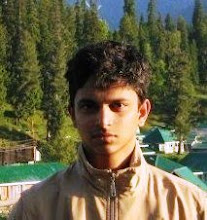I review soprano Joanne-Marie D'Mello and pianist Kumi Matsuo
Nigel Britto
Maurice Ravel’s Cinq Melodies Populaires Grecques was a worthy opening to the evening. It isn’t so hard to figure out why this set (Five Greek folksongs—translated to French) is so popular—the bunch of short, pithy pieces not only set the right mood but gave a strong indication of what was to follow. Joanne-Marie D’Mello, the London-based Goan soprano, took full advantage of the depth and varying textures of Bach, Schubert, Rodrigo, and Verdi, which were part of the repertoire she presented at the Kala Academy on Saturday.
It may not have been the best day to have the concert, what with the abundance of weddings that come with every December. Add to that a next-door concert by the far more popular tabla maestro Zakir Hussein, and only a filtered bunch of the most dedicated western classical fans made it to the hall. A growing, and healthy, trend of Goan music lovers to encourage the state’s own rising stars ensured that the concert was, considering the exclusivity of its genre, reasonably well-attended, and all who made it got their time’s worth.
Ravel’s five short songs gave way to Ernest Chausson, the French romantic composer whose lack of prolificity was compensated by a generally high standard, and whose pieces reach the repertoires of only the most capable. It was pulled off with aplomb, after which the soprano left the stage to give pianist Kumi Matsuo her share of the limelight.
If there were any questions about the credentials of the relatively-unknown pianist, the Japan-born demolished them with a vengeance; at times the ivory-tickler even overshadowed the home girl with her brilliant interpretations of Bach’s Italian Concerto in F Major and later, Schumann and Liszt. During the solo segments, her knack of exact enunciation and the way she created multidimensional textures along with the demanding yet luscious left-hand trills, while making the whole process look incredibly easy, was particularly impressive. The haunting Jeux d'eau by Ravel was also handled expertly, the sound of sprinkled water coming cleanly through the piano.
The post-interval session started with Cuatro Madrigales Amatorios, by Joaquin Rodrigo, who became one of the most popular composers of the 20th century due to his most famous work, Concierto de Aranjuez, which forms standard part of any classical guitarist’s repertoire. After this was another display of pianistic virtuosity by Matsuo, who this time round tackled one of the stunning Grandes estudes de Paganini, the No.6 in A minor (piano adaptation of the 24th Caprice). Paganini's caprices are known to be among the most technically challenging frontiers in the entire western classical spectrum. Yet, despite Liszt removing some of the outrageous complications that are hallmark of the Italian's original violin works, the masterfully-rendered rapid finger-histrionics were clearly visible for all to see.
The last soprano-piano segment started off with Gluck’s Che Fiero Momento, but what opera show can there be without Verdi? Nanette’s aria, from the opera Falstaff, perhaps came a bit late in the evening, but the soprano was probably at her best here. The scaling voice soared rapturously over the aria’s long phases, distinctive of golden Italian opera, and which continued in Donizetti’s Norina’s Aria from the opera Don Pasquale, which formally ended the show. But the enthusiastic crowd would have none of it.
The duo performed a total of three encores, each time vociferously egged on by the excited audience. The elitism of the main concert was brought down in stages, first with Schubert’s popular Ave Maria, which is as much a trademark to D’Mello as Puccini's Nessun Dorma was to Pavarotti. Next came O Holy Night, but when even that wasn’t enough, the crowd was asked to join in the final song. Now, you don’t usually see Japanese people doing Konkani songs, but that’s precisely what happened, when the duo burst into Adeus korcho vello, which quickly went from solo to group song, as the appreciative audience felt that the right way to end a pleasant evening was with a Konkani classic.
This article was first published on The Times of India, Goa, in its edition dated December 13, 2010.

